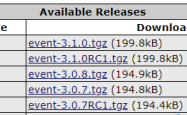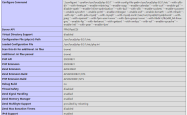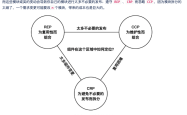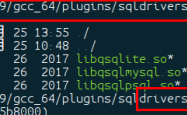Laravel5.1 框架数据库查询构建器用法实例详解
本文实例讲述了Laravel5.1 框架数据库查询构建器用法。分享给大家供大家参考,具体如下:
今儿个咱说说查询构建器。它比运行原生SQL要简单些,它的操作面儿也是比较广泛的。
1 查询结果
先来看看它的语法:
?| 1 2 3 4 5 | public function getSelect() { $result = DB::table( 'articles' )->get(); dd( $result ); } |
查询构建器就是通过table方法返回的,使用get()可以返回一个结果集(array类型) 这里是返回所有的数据,当然你也可以链接很多约束。
1.1 获取一列/一行数据
?| 1 2 3 4 5 6 | public function getSelect() { $result = DB::table( 'articles' )->where( 'title' , 'learn database' )->get(); // 获取整列数据 $articles = DB::table( 'articles' )->where( 'title' , 'learn database' )->first(); // 获取一行数据 dd( $result , $articles ); } |
我们可以通过where来增添条件。
1.2 获取数据列值列表
如果你想要取到某列的值的话 可以使用lists方法:
?| 1 2 3 4 5 6 | public function getSelect() { $result = DB::table( 'articles' )->where( 'id' , '<' , 2)->lists( 'title' ); $titles = DB::table( 'articles' )->lists( 'title' ); dd( $result , $titles ); } |
1.3 获取组块儿结果集
在我们数据表中数据特别特别多时 可以使用组块结果集 就是一次获取一小块数据进行处理
?| 1 2 3 4 5 6 7 8 9 | public function getSelect() { DB::table( 'articles' )->chunk(2, function ( $articles ){ foreach ( $articles as $article ){ echo $article ->title; echo "<br />" ; } }); } |
如果说要终止组块运行的话 返回false就可以了:
?| 1 2 3 4 5 6 | public function getSelect() { DB::table( 'articles' )->chunk(2, function ( $articles ){ return false; }); } |
1.4 聚合函数
构建器还提供了很多的实用方法供我们使用:
- count方法:返回构建器查询到的数据量。
- max方法:传入一列 返回这一列中最大的值。
- min方法:跟max方法类似,它返回最小的值。
- sum方法:返回一列值相加的和。
- avg方法:计算平均值。
1.4.1 count
?| 1 2 3 4 5 | public function getArticlesInfo() { $article_count = DB::table( 'articles' )-> count (); dd( $article_count ); } |
1.4.2 max
?| 1 2 3 4 5 | public function getArticlesInfo() { $maxCommentCount = DB::table( 'articles' )->max( 'comment_count' ); dd( $maxCommentCount ); } |
1.4.3 sum
?| 1 2 3 4 | public function getArticlesInfo() { $commentSum = DB::table( 'articles' )->sum( 'comment_count' ); } |
1.4.4 avg
?| 1 2 3 4 5 | public function getArticlesInfo() { $commentAvg = DB::table( 'articles' )->avg( 'comment_count' ); dd( $commentAvg ); } |
1.5 select查询
1.5.1 自定义子句
select语句可以获取指定的列,并且可以自定义键:
?| 1 2 3 4 5 6 7 8 9 10 11 12 13 14 15 16 17 18 19 20 21 22 23 24 25 26 27 28 29 30 31 32 33 34 35 36 37 38 39 40 41 42 43 44 | public function getArticlesInfo() { $articles = DB::table( 'articles' )->select( 'title' )->get(); // 输出结果: // array:3 [▼ // 0 => {#150 ▼ // +"title": "laravel database" // } // 1 => {#151 ▼ // +"title": "learn database" // } // 2 => {#152 ▼ // +"title": "alex" // } // ] $articles1 = DB::table( 'articles' )->select( 'title as articles_title' )->get(); // 输出结果: // array:3 [▼ // 0 => {#153 ▼ // +"articles_title": "laravel database" // } // 1 => {#154 ▼ // +"articles_title": "learn database" // } // 2 => {#155 ▼ // +"articles_title": "alex" // } // ] $articles2 = DB::table( 'articles' )->select( 'title as articles_title' , 'id as articles_id' )->get(); // array:3 [▼ // 0 => {#156 ▼ // +"articles_title": "laravel database" // +"articles_id": 1 // } // 1 => {#157 ▼ // +"articles_title": "learn database" // +"articles_id": 2 // } // 2 => {#158 ▼ // +"articles_title": "alex" // +"articles_id": 3 // } // ] } |
1.5.2 distinct方法
关于distinct方法我还没弄明白到底是什么意思 适用于什么场景,也欢迎大神们给出个答案 谢谢
distinct方法允许你强制查询返回不重复的结果集。
?| 1 2 3 4 | public function getArticlesInfo() { $articles = DB::table( 'articles' )->distinct()->get(); } |
1.5.3 addSelect方法
如果你想要添加一个select 可以这样做:
?| 1 2 3 4 5 6 | public function getArticlesInfo() { $query = DB::table( 'articles' )->select( 'title as articles_title' ); $articles = $query ->addSelect( 'id' )->get(); dd( $articles ); } |
2 where语句
where语句是比较常用的,经常用他来进行条件筛选。
2.1 where基础介绍
现在来详细介绍下where方法 它接收三个参数:
- 列名,这个没什么好说的。
- 数据库系统支持的操作符,比如说 ”=“、”<“、”like“这些,如果不传入第二个参数 那么默认就是”=“等于。
- 要比较的值。
| 1 2 3 4 5 6 7 8 | public function getArticlesInfo() { $articles1 = DB::table( 'articles' )->where( 'id' , '2' )->get(); // 等于 $articles2 = DB::table( 'articles' )->where( 'id' , '>' , '2' )->get(); // 大于 $articles3 = DB::table( 'articles' )->where( 'id' , '<>' , '2' )->get(); // 不等于 $articles4 = DB::table( 'articles' )->where( 'id' , '<=' , '2' )->get(); // 小于等于 $articles5 = DB::table( 'articles' )->where( 'title' , 'LIKE' , '%base' )->get(); // 类似 } |
2.2 orWhere
orWhere和where接收的参数是一样的,当where逻辑没有查找到 or查找到了 返回or的结果,当where查找到了 or也查找到了 返回它们的结果。
?| 1 2 3 4 5 | public function getArticlesInfo() { $articles = DB::table( "articles" )->where( 'id' , '=' , '5' )->orWhere( 'title' , 'laravel database' )->get(); dd( $articles ); } |
2.3 whereBetween和whereNotBetween
whereBetween是指列值是否在所给定的值之间:
?| 1 2 3 4 5 | public function getArticlesInfo() { $articles = DB::table( "articles" )->whereBetween( 'id' , [1, 3])->get(); dd( $articles ); } |
↑ 上述代码是查找id在1~3之间的集合。
whereNotBetween和whereBetween相反:
?| 1 2 3 4 5 | public function getArticlesInfo() { $articles = DB::table( "articles" )->whereNotBetween( 'id' , [1, 3])->get(); dd( $articles ); } |
↑ 上述代码是查找id不在1~3之间的集合。
2.4 whereIn和whereNotIn
whereIn是查找列值在给定的一组数据中:
?| 1 2 3 4 5 | public function getArticlesInfo() { $articles = DB::table( "articles" )->whereIn( 'id' , [1, 3, 5, 8])->get(); dd( $articles ); } |
↑ 上述代码中是查找ID为1,3,5,8的集合,不过我们数据库中只有id为1和3的数据 那么它只会返回id为1和3的集合。
whereNotIn和whereIn相反的:
?| 1 2 3 4 5 | public function getArticlesInfo() { $articles = DB::table( "articles" )->whereNotIn( 'id' , [1, 3, 5, 8])->get(); dd( $articles ); } |
↑ 上述代码中是查找ID不是1,3,5,8的集合。
2.5 whereNull和whereNotNull
whereNull是查找列值为空的数据:
?| 1 2 3 4 5 | public function getArticlesInfo() { $articles = DB::table( "articles" )->whereNull( 'created_at' )->get(); dd( $articles ); } |
↑ 上述代码中是查找created_at为空的集合。
whereNotNull就不用说啦:
?| 1 2 3 4 5 | public function getArticlesInfo() { $articles = DB::table( "articles" )->whereNotNull( 'created_at' )->get(); dd( $articles ); } |
↑ 上述代码中是查找created_at不为空的集合。
3 插入数据
先看下最简单的插入方法:
?| 1 2 3 4 5 6 7 8 9 10 11 12 13 | public function getInsertArticle() { // 插入一条数据: DB::table( 'articles' )->insert( [ 'title' => 'get more' , 'body' => 'emmmmmm......' ] ); // 插入多条数据: DB::table( 'articles' )->insert([ [ 'title' => 'testTitle1' , 'body' => 'testBody1' ], [ 'title' => 'testTitle2' , 'body' => 'testBody2' ], // .... ]); } |
当你需要拿到插入数据的ID的话,可以使用获取自增ID的方法:
?| 1 2 3 4 5 6 7 8 | public function getInsertArticle() { // 插入一条数据: $id = DB::table( 'articles' )->insertGetId( [ 'title' => 'get more' , 'body' => 'emmmmmm......' ] ); dd( $id ); } |
4 更新
?| 1 2 3 4 5 | public function getUpdateArticle() { $result = DB::table( 'articles' )->whereBetween( 'id' , [1, 3])->update([ 'comment_count' =>0]); dd( $result ); } |
↑ update还可以返回影响了几条数据。
4.1 加/减快捷方法
?| 1 2 3 4 5 | public function getUpdateArticle() { $result = DB::table( 'articles' )->whereBetween( 'id' , [1, 3])->increment( 'comment_count' ,2); dd( $result ); } |
↑ increment接受1~2个参数,第一个参数是列名,第二个参数是可选的表示增加几(默认是1),上面的语句是:comment_count这一列的值增加2。
?| 1 2 3 4 5 | public function getUpdateArticle() { $result = DB::table( 'articles' )->whereBetween( 'id' , [1, 3])->decrement( 'comment_count' ,2); dd( $result ); } |
↑ decrement接受1~2个参数,第一个参数是列名,第二个参数是可选的表示减少几(默认是1),上面的语句是:comment_count这一列的值减少2。
你以为加减快捷方法只接收两个参数么?nonono 它还可以接收第三个参数:
?| 1 2 3 4 5 | public function getUpdateArticle() { $result = DB::table( 'articles' )->whereBetween( 'id' , [1, 3])->increment( 'comment_count' , 2, [ 'title' => 'testUpdate' ]); dd( $result ); } |
↑ 它还可以在增加/减少时对其他列进行修改。
5 删除
?| 1 2 3 4 5 | public function getDeleteArticle() { $result = DB::table( 'articles' )->whereBetween( 'id' , [1, 3])-> delete (); dd( $result ); } |
↑ 用delete删除数据,它也返回有多少行被影响。
当你想要删除所有的列 并且把自增ID归0的话 可以这么做:
?| 1 2 3 4 | public function getDeleteArticle() { DB::table( 'articles' )->truncate(); } |
6 锁
查询构建器还包含一些方法帮助你在select语句中实现”悲观锁“。可以在查询中使用sharedLock方法从而在运行语句时带一把”共享锁“。共享锁可以避免被选择的行被修改直到事务提交:
?| 1 | DB::table( 'articles' )->where( 'id' , '>' , 100)->sharedLock()->get(); |
此外你还可以使用lockForUpdate方法。”for update“锁避免选择行被其它共享锁修改或删除:
?| 1 | DB::table( 'articles' )->where( 'id' , '>' , 100)->lockForUpdate()->get(); |
希望本文所述对大家基于Laravel框架的PHP程序设计有所帮助。
原文链接:https://www.cnblogs.com/sun-kang/p/7468436.html
1.本站遵循行业规范,任何转载的稿件都会明确标注作者和来源;2.本站的原创文章,请转载时务必注明文章作者和来源,不尊重原创的行为我们将追究责任;3.作者投稿可能会经我们编辑修改或补充。











